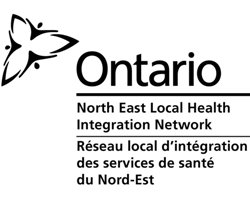 North East LHIN
North East LHIN
News Release
*****
Northeastern Ontario’s transformation from paper medical records to electronic medical records (EMRs) is spreading rapidly, improving quality patient care across the North East LHIN region.
Our region boasts great stats for this eHealth initiative: more than 75 per cent of our family physicians use electronic records, all our six nurse practitioner clinics have gone electronic, and all 25 of our hospitals are in various stages of becoming totally electronic.
“Given our region’s significant geography, information technology and information management are key resources to connect patients with care,” says Louise Paquette, CEO, NE LHIN.
“Technology is the enabler for improving care coordination, navigation and access for fellow Northerners.”
The North East LHIN is constantly seeking solutions that will bring care closer to home for Northerners. Electronic health record opportunities help to overcome these distances, and some areas that are only accessible by ice roads in the winter.
“Our first step is to get every provider electronic in the patient’s journey through the health system,” says Tamara Shewciw, the North East LHIN’s Chief Information Office and eHealth Lead.
“Then the next step is to connect everyone.” Through this connection, EMRs help multiple locations both document and receive patient health information in real time, improving safety for patients and efficiency for primary care providers.
Here are some of the ways that patients, clients and people are accessing care closer home as a result of electronic health record opportunities in the North East LHIN:
NEON – North Eastern Ontario Network
- NEON -- North Eastern Ontario Network is a common hospital information system in the NE LHIN region. It’s a partnership of 22 hospitals sharing a common information system. In the region’s far north, WAHA – the Weeneebayko Health Authority on Moose Factory Island (including connections to Attawapiskat, Fort Albany, Moosonee, Moose Factory) – was recently connected to the system, along with hospitals in Mattawa and West Nipissing.
- NEON allows a patient to present at any of these hospitals and their patient information is instantly accessible within the hospital system. The information follows the patient. In addition, PACS (Picture Archiving and Communication System) is used as a shared system for Diagnostic Imaging throughout the LHIN.
POI – Physician Office Integration
- Using POI -- Physician Office Integration – 22 hospitals send patient discharge summaries, Diagnostic Imaging and Lab reports to a secure regional repository, where the reports remain till picked up by the care provider. 24 NE LHIN hospitals are part of POI: 20 have now implemented it and four are in the process of implementation.
- Currently more than 178 physicians and nurse practitioners in the North East LHIN are using POI, with more in the queue to join.
Telehomecare
- Telehomecare delivers a new way to care for patients, right in their home. In 2013, the North East LHIN championed the Telehomecare program for patients with COPD (Chronic Obstructive Pulmonary Disease) and heart failure, to help them learn to self-manage their chronic conditions. The NE LHIN is one of three early adopter LHINs in Ontario to offer the Telehomecare program to people in their own homes.
- Telehomecare nurses teach, coach and enable patients to actively manage their condition, keeping the primary care provider in the loop. We now have 420 Northerners enrolled in the program, and more being sought for this patient-empowering care.
Telemedicine
- The North East LHIN has embraced the use of the Ontario Network’s (OTN) Telemedicine as a way to increase access to care – overcoming vast geographic challenges in retaining/recruiting health human resources – to become the highest user of telemedicine among the 14 LHINs, with 282 sites. For patients, telemedicine’s two-way videoconferencing means more care closer to home, less travel and an increase in the types of care available at the telemedicine sites across the North East LHIN. Under the leadership of the NE LHIN, the region’s number of OTN sites has grown by 395%, from 57 telemedicine sites in 2006/07 to 282 in 2013.
- Using telemedicine, a total of 120,290 Northerners have now been able to consult with specialist and primary care outside their community.
*****


